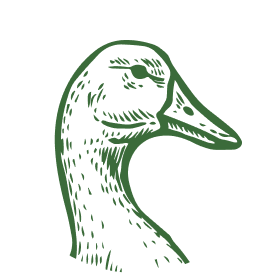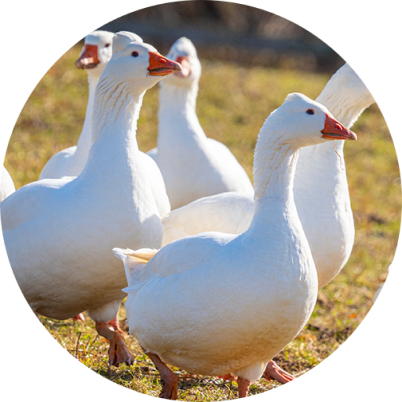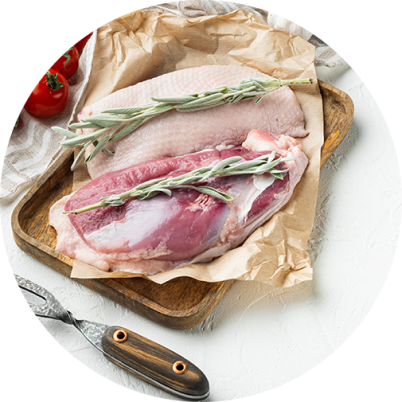DUCK


Ducks are characterised by a very fast growth rate. In order for this to be maintained, it is important to ensure proper housing and nutrition. Providing ducks with appropriate growth conditions has a positive effect on the quality of the meat.
In Poland, ducks are usually kept on small farms. During the "goose season" (from March to October), geese are kept there, and in the remaining months – it is the ducks. On such farms, ducks are allowed to enjoy free-range pens. Fresh air, natural light and plenty of movement stimulate the ducks' natural resistance to disease.
The ducks' basic diet consists of grain bran, high-protein pulses gran, rapeseed and vegetable or animal fats. The whole is supplemented with minerals and vitamins and strictly essential amino acids. The basic diet can be supplemented with root vegetables, green fodder, and even silage. Ducks are typically omnivorous birds.

White Pekin duck farming is not harmful to the environment. The heating of the housing only in the first 3-4 weeks of life and the possibility of free-ranging make the farming low-energy intensive, leaving a low carbon footprint.
Duck farming in Poland is carried out according to the principle "from farm to fork", which makes it possible to analyse and identify in detail each stage of farming, slaughter and post-slaughter processing as well as marketing.

All duck flocks are strictly monitored at veterinary inspections, ruling out the use of unauthorised substances in their feed, including growth stimulants. Natural housing conditions and high-class nutrition, mainly low-processed feed, significantly increase the efficiency of the immune system and the birds' natural resistance, which minimises the occurrence of health disorders and the use of medicines. The main concern is the welfare of the birds. Meat quality control is carried out in two stages – poultry producers also verify the quality of the meat.

Duck meat, like goose meat, is classified as "red meat". Despite the fact, that relatively high fat content increases its calorific value, it significantly improves its sensory properties and especially its taste. This is largely determined by the fatty acid profile, especially the content of polyunsaturated fatty acids. The fat composition of ducks largely depends on their nutrition. It is often similar to goose fat composition.
Duck meat is high in fat-soluble vitamins (A, D, E) and B-vitamins (especially B12). The red colour of the meat proves the high content of haemoglobin, myoglobin – and therefore iron. Duck meat is also a very good source of magnesium, potassium and phosphorus. It is recommended to include duck meat in the diet of people who are prone to anaemia.
